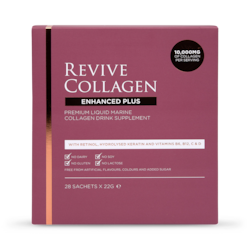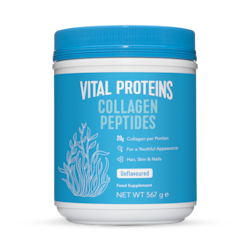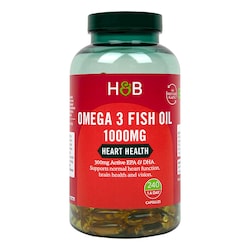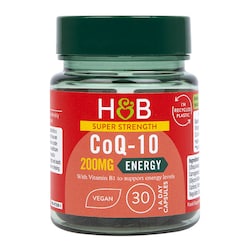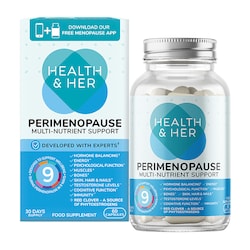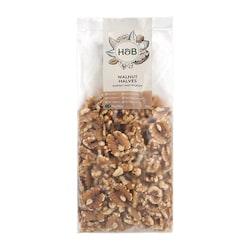15% off £20
Your guide to bioavailability
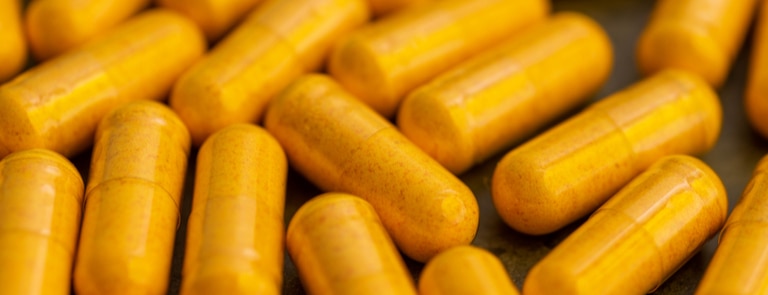
Whether you’re completely new to bioavailability or you’ve heard the term and you’d like to find out more, you’re in the right place.
Sometimes it isn’t as simple as just popping a supplement in the morning, as the bioavailability of what you’re taking should be considered.
From defining what bioavailability is to the best products and formats to look out for, find out more in our guide to bioavailability.
In this article, we’ll explore:
- Bioavailability definition
- The importance of the bioavailability of drugs
- Key benefits of products with high bioavailability
- Top high bioavailability products to look out for
- What affects bioavailability
- The bioavailability of food
- If everyone can use high bioavailable products
What is bioavailability?
What does bioavailability mean then? The key bioavailability meaning is as follows:1
Bioavailability is the degree and rate that a drug or metabolite (the substance made when breaking down food, drinks, chemicals or tissue) enters the circulation system, and then the site of action.
Two of the main factors that determine bioavailability are the products design and the way it was manufactured.
For example, oral drugs have to pass through the intestinal wall and the liver before reaching the circulation system – meaning that they can be partially metabolised before they reach the place in the body that they need to be.
This is most common with poorly water-soluble and slow digestive drugs.
Why is the bioavailability of a drug important?
Bioavailability is important because we can’t rely on our bodies to be 100% efficient all the time.
This means that while we might be taking supplements and eating nutritious food, it doesn’t always absorb all the nutrients it needs to.
Some of these key nutrients may be destroyed in the stomach, intestines or liver, excreted back out of the system, or don’t even enter the cells.2
Our nutrition expert highlights that:
“Bioavailability is key as without proper absorption and use the substance (say, the active ingredient in a drug, or a vitamin, mineral, fat, plant compound, etc.) the substance will not exert the desired effects to the level required.”
What is the difference between absorption and bioavailability?
Bioavailability and absorption are often used to describe the same thing, but there is a slight way to differentiate between the two.
Essentially, absorption can be defined as the movement of a drug through the outer membranes of the GI tract aka the hollow tubes that are connected between the mouth and the anus.3
Whereas the bioavailability definition is focused more on the availability of the drug to the general circulation system, or target site.4
What affects drug bioavailability?
There are a number of different factors that can affect drug bioavailability – from internal bodily factors, the properties of the drug and the form in which it is taken.
Looking at the internal bodily factors first, things like age, sex, levels of physical activity, genetics, stress, certain disorders or GI surgery can affect the bioavailability of drugs.5
When assessing which drug properties affect bioavailability, there are a couple of key factors that are often highlighted in studies.
These include: fat solubility and degree of ionization, as the combination of a high fat solubility rate and low ionization allow the drug to move through the cell membranes easier.6
In addition to this, some formats of supplements have a higher bioavailability than others. Some of these different forms include oral sprays, capsules, liquid droplets and medical injections.
Equally, the way in which you take these formats, whether with a meal or not, may affect the bioavailability of what you’re taking.
Our nutrition expert also highlighted how the binding of active ingredients can affect bioavailability:
“Some substances can bind to active ingredients/ substances forming compounds which the body finds harder to absorb.
"This often applies to certain nutritional factors such as plant compounds like phytates, oxalates and polyphenols found in plants foods and some drinks, which then affect mineral absorption.
"Including other substances which aid bioavailability, for example vitamin C for iron, or food high in animal protein for iron and zinc helps overcome this.”
“Minimising regular inclusion of tea, coffee and other dark coloured drinks (e.g. red wine) at meals times will reduce the unnecessary inclusion of high levels of polyphenols with food.
"These are great things to include in the diet in moderation for their health benefits but are best consumed in-between meals.
"Cooking and processing (e.g. soaking, sprouting) also helps break down these plant compounds that affect mineral absorption.”
They also highlighted how the liver may affect this too:
“All substances consumed orally pass via the liver. This leads to the levels of substances often being degraded to some level before they are then absorbed into the bloodstream.
"Some substances (e.g. bioperine) reduce this response on the liver and this substance is added to many turmeric products, as well as other supplement types to aid absorption.”
Summary
- Bioavailability determines how fast and efficiently our bodies absorb nutrients from drugs, dietary supplements or food
- A higher bioavailability generally means more nutrients are being absorbed than through conventional methods
- A number of different influences can affect this, from timing, age, sex and lifestyle to the format used to take the supplement and when it was taken in the day i.e. before a meal
4 bioavailability products to look out for
While some oral supplements can have a relatively low bioavailability, since it has to pass through the liver, what formats of supplements offer a higher bioavailability? Here’s what to look out for:
-
Oral sprays
A transdermal form of supplement (through the skin), oral sprays are said to have a higher bioavailability than some traditional oral tablets as they bypass the liver, and therefore there is a decreased risk that less nutrients will be absorbed.7
-
Capsules
Some capsules may also have higher bioavailability than other formats, such as tablets. In one 2008 study that focused on the bioavailability of sulindac, the results showed that the bioavailability in the capsules as opposed to the tablets tested were higher in bioavailability.8
-
Liquid droplets
Also known as sublingual supplements, these are another form of transdermal drug. Made to be dropped onto the skin underneath the tongue, 2011 research highlighted that the absorption of the drug that was tested was 3 to 10 times greater than via the oral route.
This is due to the fact that it bypasses the first-pass metabolic processes in the digestive system and liver.9
-
Injections
While you can’t buy injections, in severe cases of vitamin deficiency for example, an injection is used rather than other forms of supplementation as it is injected directly into the circulatory system.10
-
Controlled release tablets
One 2001 study explored the difference between sustained release tablets and conventional tablets, and found that the bioavailability of the former was significantly higher.11
As well as these five different bioavailability products to look out for, our nutrition expert also added a couple more key products/ingredients to keep an eye out for. These include:
- Chelated forms of minerals – “these are mineral compounds where the mineral is bound to an amino acid to aid absorption. A common form is biglyscinate chelates used for iron, zinc and magnesium.”
- Turmeric with added black pepper – “black pepper contains a substance called piperine (sometimes also referred to as bioperine) which reduces the amount of the active ingredients in the turmeric that are broken down in the liver, meaning more are available to be absorbed into the blood stream to made use of and to provide benefits.”
5 benefits of products with high bioavailability
We’ve highlighted some of the products and formats to look out for when it comes to choosing supplements with a high bioavailability level, but what are the benefits of using these rather than conventional supplements?
We take a deeper dive below.
- Better absorption. Taking a supplement with high bioavailability means you’ll absorb more of the nutrients that you’re consuming.
- Added flavour. If you’ve opted for an oral spray instead of a tablet, a lot of products come with a burst of flavour too, from cherry and blueberry to raspberry.
- Lower dosage. In some instances, supplements that have been designed to have higher bioavailability require you to take a lower dosage, while absorbing more of the key nutrients.
- Longer time at the target site. As some oral supplements take longer to get to the target site (if at all) it means that they don’t have enough time to do what they need to, where they need to. Whereas with supplements with higher bioavailability get to the target site faster.12
- Better for people who struggle to take tablets. As there are a selection of transdermal supplements with high bioavailability, those who struggle to swallow tablets will be able to get the nutrients they need in a way that suits them.
Summary
- Key products with a higher bioavailability to look out for include oral sprays, sublingual drops, capsules, controlled release tablets and injections
- Some of the top benefits to using products with a higher bioavailability include better absorption, enhanced experience, lower dosage, longer time at the target site and potentially more comfortable to consume
Are bioavailability supplements suitable for everyone?
Generally speaking, bioavailability supplements are designed in a way that is suitable for most people.
Our nutrition expert weighs in, stating:
“Enhanced absorption and use equals greater potential benefits. But, as in all situations, any customer with any pre-exsiting health issue or taking medicines should always consult their GP before using any products.”
Additionally, certain ingredients could cause irritation in people with certain health conditions.
For example, while the ingredient piperine is sometimes used to increase bioavailability, it can potentially cause damage to the GI tract if the supplements have been swallowed.13
So it’s best to avoid this ingredient, especially if you have gut issues.
What is bioavailability of food?
Like with drugs and supplements, the bioavailability of food means how well the proportion or fraction of a nutrient is absorbed and used by the body.14
However this can be impacted by a variety of factors, such as: nutrient concentration, nutritional status, health, and life-stage.
As well as this, the structure of the food itself has a role to play, alongside the foods that are eaten at the same time.
In order to increase the bioavailability of foods with rigid tissue structures, the key is to chop or mince the food before eating it.
And balance the mix of raw and cooked food to maximise micronutrient absorption.15
The final say
Understanding the importance of the bioavailability of drugs, supplements and foods are essential when learning about nutrition or choosing which products to buy.
Last updated: 29 July 2021
- https://www.msdmanuals.com/en-gb/professional/clinical-pharmacology/pharmacokinetics/drug-bioavailability
- https://www.ncbi.nlm.nih.gov/books/NBK557852/
- https://www.niddk.nih.gov/health-information/digestive-diseases/digestive-system-how-it-works
- https://pubmed.ncbi.nlm.nih.gov/11253613/
- https://www.msdmanuals.com/en-gb/professional/clinical-pharmacology/pharmacokinetics/drug-bioavailability
- https://www.sciencedirect.com/sdfe/pdf/download/eid/3-s2.0-B9781416034797100205/first-page-pdf
- https://www.nature.com/articles/nbt.1504
- https://www.nature.com/articles/nbt.1504
- https://innovareacademics.in/journal/ijpps/Vol3Suppl2/1092.pdf
- https://toolbox.eupati.eu/resources/bioavailability-and-bioequivalence/
- https://pubmed.ncbi.nlm.nih.gov/11695713/
- https://www.msdmanuals.com/en-gb/professional/clinical-pharmacology/pharmacokinetics/drug-bioavailability
- https://www.ncbi.nlm.nih.gov/pmc/articles/PMC3458266/
- https://www.canr.msu.edu/news/are_you_absorbing_the_nutrients_you_eat
- https://www.canr.msu.edu/news/are_you_absorbing_the_nutrients_you_eat


